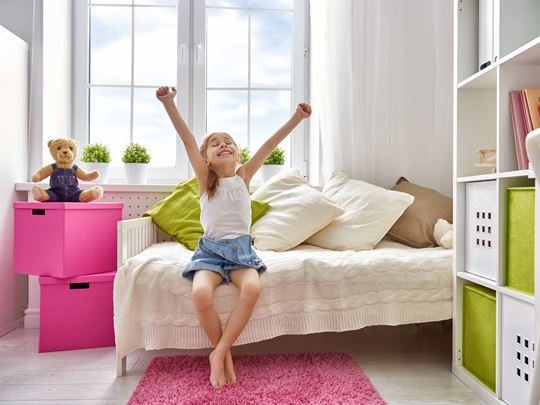
One of the key requirements for becoming a foster carer in the UK is the ability to provide each child you foster with a room of their own. If you are preparing to welcome a foster child into your home, decorating your spare room to fit the requirements can be both an exciting and daunting task.
Here we’ll share some top tips and ideas for decorating your spare room with fostering in mind.
The Essentials
A child’s bedroom should be a place of play, rest and relaxation. The needs of the child should always be the primary consideration in order to support their wellbeing and growth. The first thing to keep in mind when decorating a bedroom for a foster child is that your room must contain the essentials. These include a suitable bed, clothes storage, and a space for work and play. The suitability of your spare bedroom will be assessed by your foster agency during the early stages of your fostering journey.
Depending on the age of the young person you will be caring for, there may also be safety considerations. For example, if you’re taking care of a younger child, it can be beneficial to invest in window guards, outlet covers, and furniture brackets to prevent injury to curious little ones.
Prioritising Your Foster Child’s Needs
Many children who come to live with foster carers may not have had a room of their own before or may not be used to sleeping alone. It can be scary for a child to sleep alone for the first time and many fostered children struggle with adjusting to this new routine. When decorating your spare room, investing in a night light with a soft glow can help your foster child feel more at ease at bedtime. The addition of blackout blinds and seasonally appropriate bedding which allows for better temperature regulation can also help contribute to a good night’s sleep.
Making Your Spare Room Feel Like Home
When it comes to decorating your spare room, it’s a good idea to consider the type of foster care you will be providing. If you choose to specialise in short-term care, it may be beneficial to choose a neutral colour scheme for walls and furniture, rather than bold colours or colours traditionally associated with a specific gender. A neutral bedroom allows all children to feel welcome when they first arrive in your home.
Remember, neutral doesn’t have to mean boring. In fact, one of the benefits of choosing a neutral colour palette is that it makes a space easily customisable. Once a child is settled into your home and you begin to learn more about their likes and interests, you can adapt the room to their tastes without having to go to great expense.
Involving your foster child in personalising their space can be a fun way to bond and learn more about their interests and hobbies. You can achieve this by allowing them to choose their own soft furnishings and decorative items such as bedding and posters, and asking them what else you can provide to help them to settle into their new bedroom. Involving your foster child in this process can also add an element of excitement to what is oftentimes a scary transition for looked after children. Being able to decorate their bedroom with their favourite colours, characters and things which represent their interests can aid the process of making a new place feel like home. With a little bit of preparation and teamwork, you can successfully transform your spare bedroom into a place of comfort and sanctuary for your foster child.
Interested in learning more about becoming a foster carer? You can find out more about how you can help change young people’s lives in your area here.





